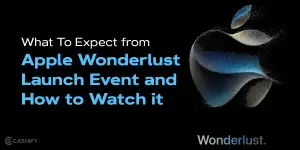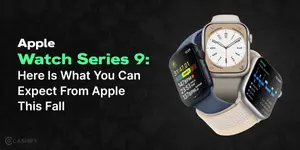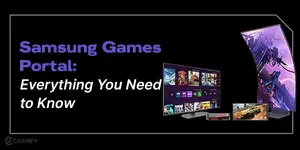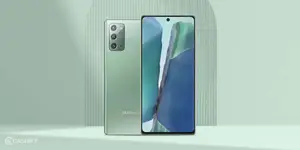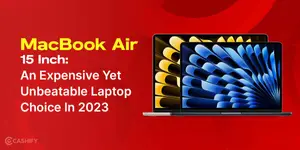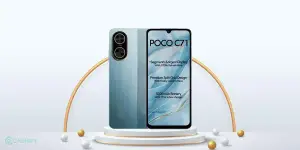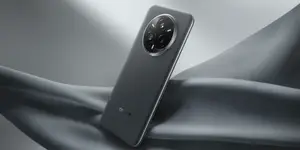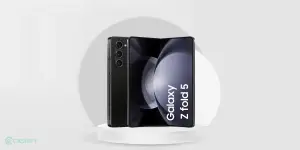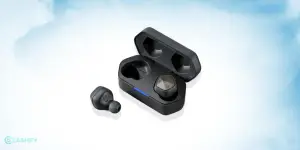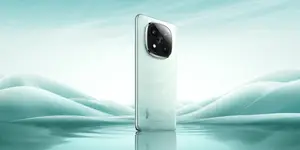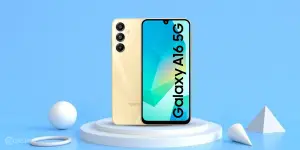When we consider the trajectory of smartwatches, the narrative often becomes Apple Watch versus the rest. The debate is not unfounded. Despite Android-powered smartwatches having a headstart in the market, Apple’s entry in 2015 changed the game dramatically. Today, the gap between Apple’s offerings and Wear OS watches seems to be growing. So, what contributes to this chasm?
Also Read: Apple Watch Series 10: Price, Features, And Other Details
The Advent of Apple Watch
Before 2015, Android smartwatches were primarily characterised by their plastic builds and somewhat unattractive designs. Consumers often had to spend significant sums of money on devices that didn’t quite feel premium. This changed with the arrival of the Apple Watch, which brought an air of sophistication to the smartwatch market. Its all-metal design and chamfered edges were consistent with Apple’s design ethos, delivering a genuinely premium experience.
Also read: 6 Interesting Things About The Apple Watch Ultra 2!
A Tale of Two Visions
Apple’s success with its wearables can be partially attributed to the company’s razor-sharp focus on what it wants the device to be. From the beginning, Apple had a defined vision: to create a timepiece that excels in select functions rather than attempting to be a jack-of-all-trades. Apple’s recent press conferences demonstrate the fruits of this narrow focus. For example, the latest Apple Watch models are equipped with the new S9 SiP chip, designed in-house to enhance core functionalities and optimise the user experience.
Also read: 5 Apple Watch Series 9 Features To Know About!
The Wear OS Dilemma
Wear OS, Google’s operating system for smartwatches, suffers from an identity crisis. Unlike Apple, Google has not distilled the platform’s essence, perhaps due to its open-source nature. Google has taken an ‘acquisition approach’ to compensate for this lack of vision. For instance, Google acquired Fitbit, which itself had bought Pebble, another smartwatch company. Google also purchased Cronologics to infuse new talents into its Wear OS project. However, the question remains: Can a conglomerate of multiple visions compete with Apple’s singular focus?
A Multi-Layered Problem
The lag of Wear OS compared to the Apple Watch is not straightforward. Some issues can be attributed to the Android ecosystem, while others are specific to the Wear OS platform. In essence, Google has to determine what it wants Wear OS to be, much like how a watch needs hands correctly positioned to tell time.
Also read: 5 Best Apple Watch To Buy In India 2023
One significant advantage that the Apple Watch enjoys is its seamless integration within the larger Apple ecosystem. From iPhones to MacBooks to iPads, each Apple device is designed to work flawlessly with the others. This cohesiveness extends to the Apple Watch, making it not just a standalone product but an integral part of a unified user experience. Features like Handoff, Continuity, and the ability to answer calls or respond to messages directly from the watch offer a level of convenience that is hard to replicate. Apple’s well-knit ecosystem ensures that your Apple Watch can serve as a companion device, offering functionalities that extend beyond mere timekeeping or fitness tracking.
watchOS: Tailor-Made for Apple Hardware
When it comes to optimisation, watchOS—the operating system running the Apple Watch—is an exemplar of hardware-software symbiosis. Since Apple controls both the hardware and software components, it can finely tune watchOS to leverage the hardware’s capabilities fully. The result is a smooth, responsive experience with minimal lags or glitches, be it through daily tasks or more computationally intensive operations. The latest versions of watchOS continue to build upon this by adding new features and optimisations that are precisely calibrated for the device’s capabilities, making the most of the Apple Watch’s hardware.
Wear OS: A Scattered Approach
In contrast, Wear OS faces a more significant challenge because it’s designed to run on various hardware from different manufacturers. This diversity, while a strength in some respects, complicates optimisation efforts. Unlike Apple’s top-to-bottom control, Google provides the Wear OS software but relies on individual manufacturers to tailor it to their hardware. Consequently, the user experience can vary significantly between different Wear OS watches, depending on how well the manufacturer has optimised the software for its hardware.
Also read: Apple Watch Series 7: 8 Useful tips and tricks
The fragmentation in the Wear OS ecosystem comes at a price—inefficiencies and a less cohesive user experience. Even as Google strives to unify the Wear OS experience across devices, it’s an uphill battle. Manufacturers often add their layers of software atop Wear OS, leading to inconsistencies that can frustrate users and create hurdles for developers aiming for a uniform application experience across devices.
Apple Watch Ultra 2: Premium-ness Unmatched
Adding another layer to Apple’s advantage is its most premium offering in the smartwatch category: the Apple Watch Ultra 2. Designed to be the ultimate wearable tech device, this high-end model embodies the pinnacle of Apple’s craftsmanship and technological innovation. The Apple Watch Ultra 2 elevates the concept of a smartwatch from a mere accessory to a luxury item, offering a range of exclusive features and materials that you won’t find in other Apple Watch models or competitors’ devices.
Also read: 7 Times Apple Watch Saved People’s Life!
From its state-of-the-art display to custom-designed bands, the Apple Watch Ultra 2 goes beyond functionality and taps into the realm of luxury and exclusivity. Coupled with the advanced capabilities of watchOS, the device delivers an unparalleled user experience. Every aspect of the Apple Watch Ultra 2 is meticulously designed to work in harmony with the broader Apple ecosystem, further emphasising the cohesive experience Apple offers to its users.
This level of attention to detail and integration in the Apple Watch Ultra 2 is something Wear OS devices have yet to match. While several luxury brands have ventured into the Wear OS ecosystem, the diversity of hardware and software customisations makes it challenging to provide a uniformly premium experience. Consequently, while Wear OS may offer a range of options, it often lacks the cohesiveness and the premium, unified feel that comes naturally to the Apple Watch Ultra 2.
Conclusion
While the Apple Watch continues to set benchmarks in the smartwatch market, Wear OS struggles with its lack of a distinct identity and vision. Google has a considerable challenge ahead: to define what Wear OS should be and align it effectively to compete with the Apple Watch’s clearly established brand. Until then, it seems the gap between the two will only continue to widen.
Click here if you’re looking to sell phone online, or want to recycle old phone, and Cashify will help you get the process completed right at your doorstep.

